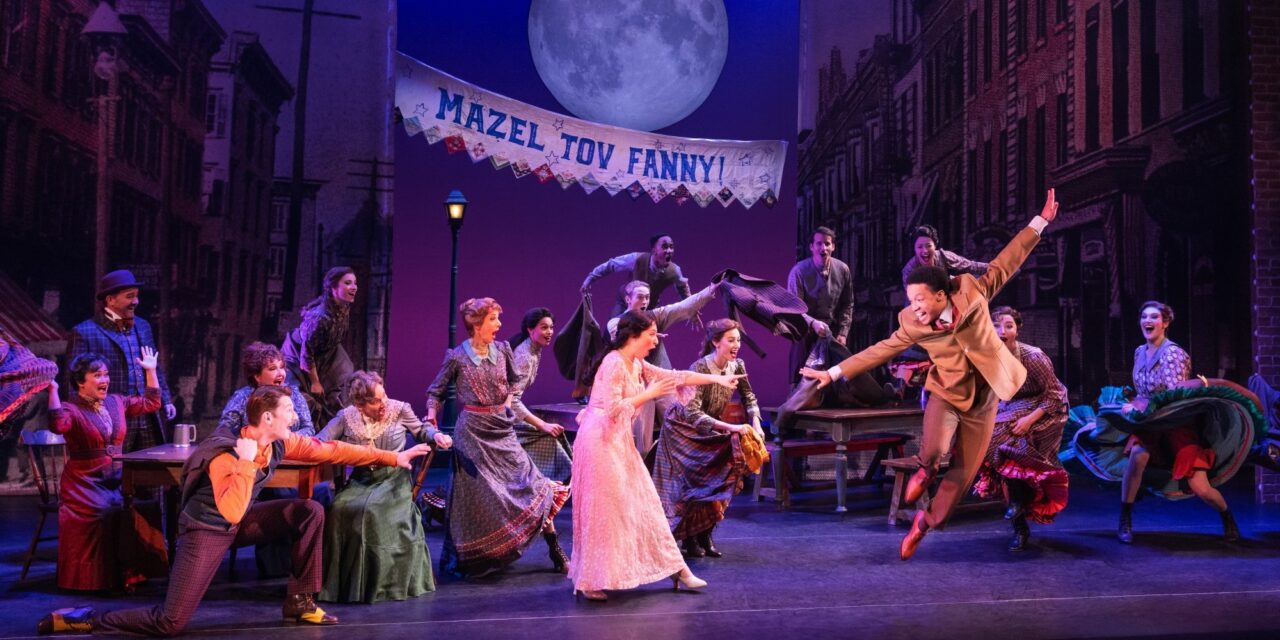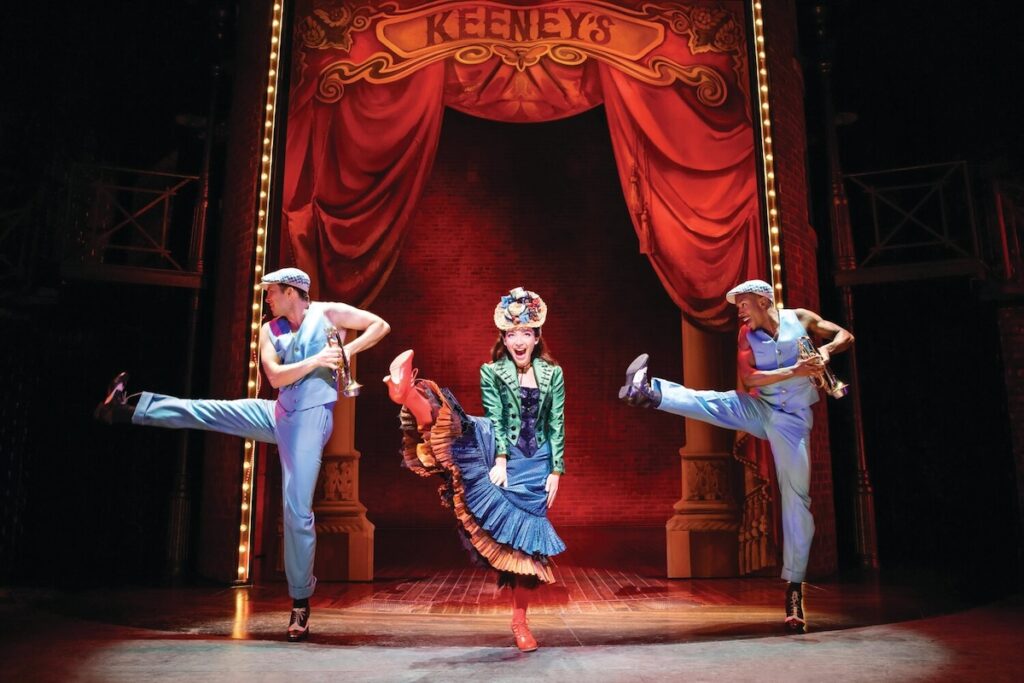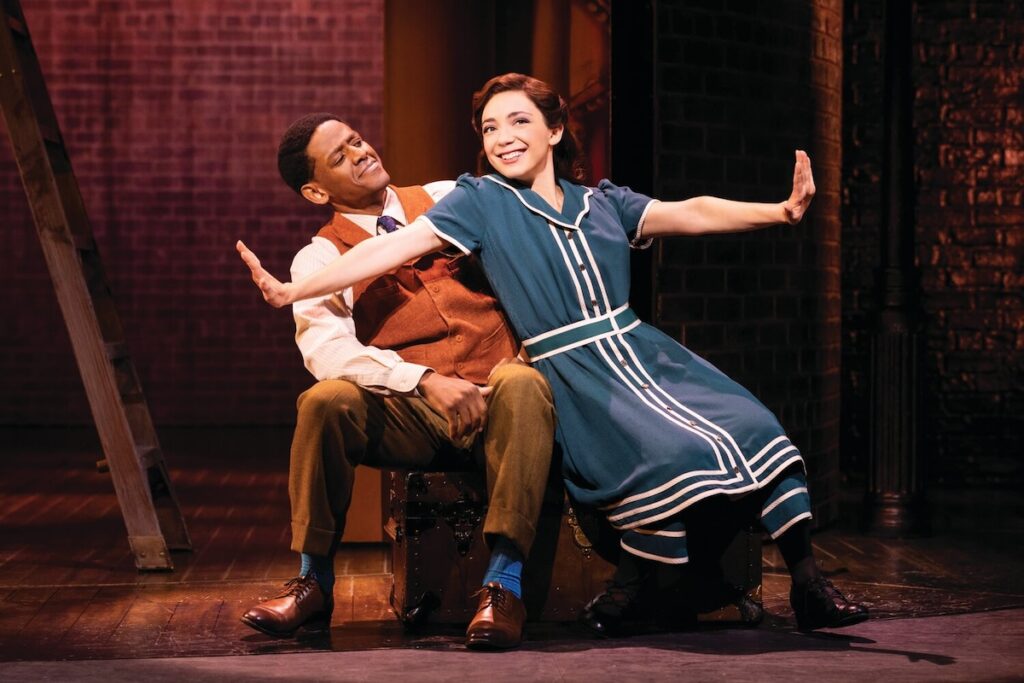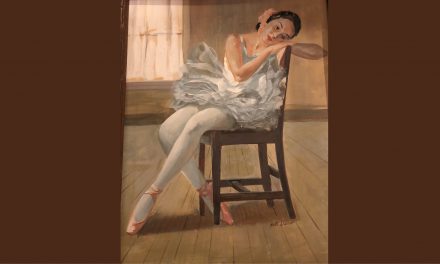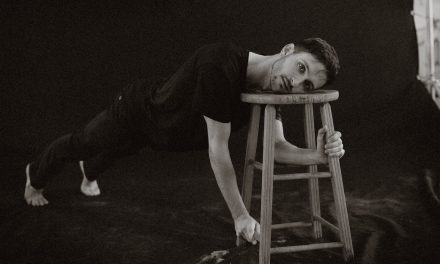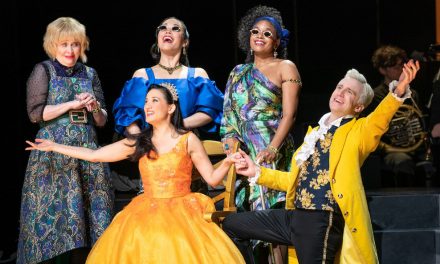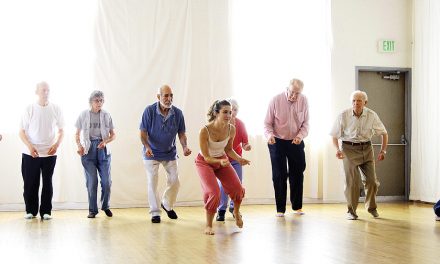The revitalized Broadway musical Funny Girl, loosely based on the life of Fanny Brice, has settled in at the Ahmanson Theater, its latest stop on its national tour. Among the various changes in Harvey Fierstein’s reworking of the show, one aspect getting considerable attention is the expanded and deepened role of Fanny’s early supporter Eddie Ryan, whose friendship bears witness to Fanny Brice’s career success as well as her troubled, doomed romance with the gambler Nicky Arnstein. The expansion of Eddie Ryan in the story included a substantial new injection of tap dance into the show. As Eddie on Broadway, Jared Grimes’ taps tore up the stage. While reviews of the national tour understandably focus on the breakout star Katerina McCrimmon as Fanny Brice, the raves confirm the role of Eddie Ryan is now the property of Izaiah Montaque Harris.
Writing for LA Excites, Imran Jalali wrote: “Izaiah Montaque Harris is the altruistic Eddie Ryan, a dance director and close advocate of Fanny’s who takes a chance on her. Harris is especially riveting when he continually ups the ante with a fiery tap demonstration that garners alacritous applause in the first act. Adding a little tap flair of their own are Lamont Brown and Ryan Lambert as the sterling silver-clad “Rat-Tat-Tat-Tat” men who spryly hoof with silver-sheened rifles in tow.”
Another reviewer, Karen Salkin wrote “I was enthralled by the new tap numbers, which are all fabulous. I learned the most about tap from my very dear friend, the late Fayard Nicolas, (of the Nicholas Brothers,) and I promise you that he would have loved all the dancers, especially Izaiah Montaque Harris as Eddie, Fanny’s bestie, and the tap choreography by Ayodele Casel. Fayard always told me that he prefers this style of tap, where people stand-up straight and let their feet do the work, as opposed to the tappers who ply their trade all hunched-over and sort-of leaning down. Every time Izaiah danced in Funny Girl, I was wishing that Fayard could have seen him.”
Inline image
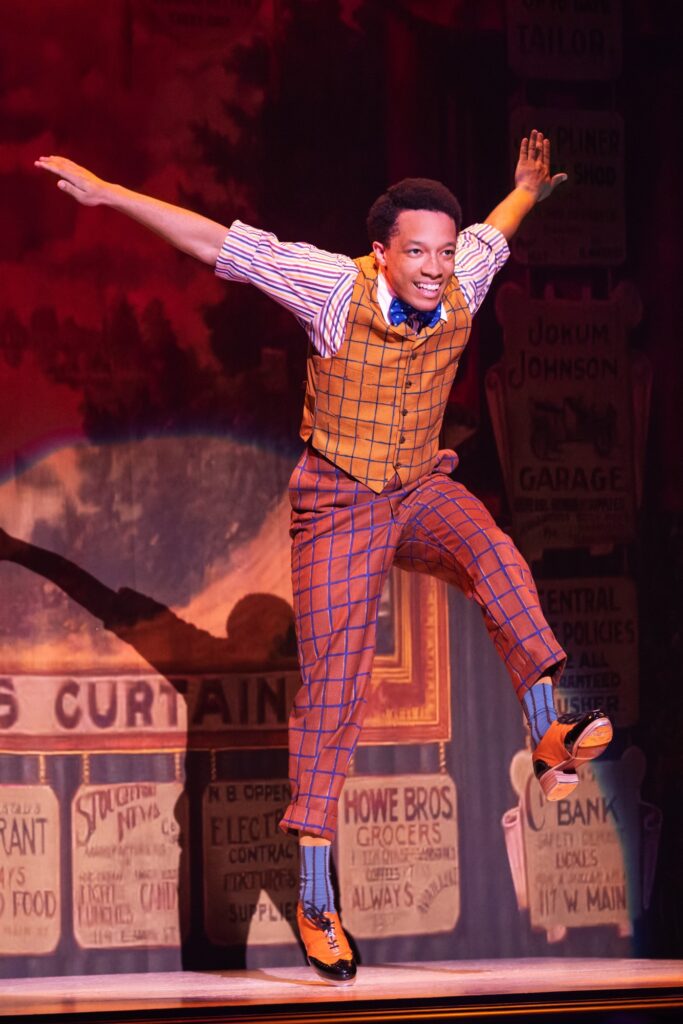
Izaiah Montague Harris as Eddie Ryan in Funny Girl – Photo by Matthew Murphy, courtesy of Center Theatre Group.
Izaiah Montague Harris took time between performances to talk with LA Dance Chronicle’s Ann Haskins about the role of Eddie Ryan and the role of tap dance in this reworked version of Funny Girl.
LADC: How did tap, and especially the tap for Eddie Ryan come to be part of this Funny Girl?
Harris: Originally, the changes were given to Jared Grimes on Broadway. With his talent, the choreographer Ayodele Casel gave the character more freedom in the tap. I am the next in line to represent Eddie Ryan in this story.LADC: How is this Eddie Ryan different than the one people saw in the film with Barbra Steisand or even the original with her on Broadway?Harris: This one is different because I have more script about the journey of Eddie Ryan. While Eddie Ryan doesn’t talk about his parents or even about his feelings for Fanny very much, you see more about the character of Eddie Ryan in these scripts. With Harvey Fierstein writing the script and Michael Mayer as director fleshing it out, we just see more of who Eddie Ryan is as a person, not only as a performer. In the Barbra Streisand version it is more of a vaudeville type of show, especially with Eddie Ryan. Here he’s allowed to be a little softer, his sensitive side. In the number Coronet Man, Eddie Ryan has an awakening. He knew that Fanny had it in her, yet Coronet Man is the first time that Eddie sees her actually own her talent onstage for the audience. He is just so proud of Fanny. That’s a moment that really makes me happy. And of course “Eddie’s Tap.” I finish and I’m just “Let’s do it again.
LADC: Please tell me about your preparation and thinking about Eddie Ryan.
Harris: A big thing we worked on a lot is Eddie Ryan’s age. The play is over a span of about twenty years. So he starts off kind of 21-ish, not a very mature person. Acting is bringing yourself to the given circumstances, so for my version of Eddie Ryan, I put my own 16- or 20-year old self into this character. I like to be a little bit more quirky, yet show I know Fanny has the ability to take off like a rocket, so I smile, give a lot of energy, and tell jokes with her. I think I just heighten the circumstances of making sure Fanny Brice is smiling as she journeys to success.
LADC: Where has Eddie Ryan grown to by the end?
Harris: As the end approaches, he begins to find his voice. At first, it’s a voice with a little bit of anger, a bit of resentment that he puts into some jokes and some looks and some comments that are probably not needed. But he still prides himself by saying it. And by the end of it, he realizes that he only can do what he can do. Yes, he was justified about his feelings because they were valid, but at the end, he understands what he can control and what he can’t control.
LADC: Where did the addition of tap dancing come from?
Harris: The tap dancing was from choreographer Ayodele Casel. She is world renowned tap dancer who danced with all the greats, especially the greats of the last generation like Savion Glover and Gregory Hines. She brought such history to the steps that are in Eddie’s numbers with references to Bill Bojangles Robinson, John Bubbles, Baby Laurence, all famous tap dancers.
The spaces that are present in the piece gave Jared, and now me, a chance to express our own individuality through improv. Improvisation has been a key element to tap dancing throughout the history and will always be a key element to tap dancing as an art form because tap dancing is so connected to jazz. When it comes to the individuality of what I bring and what Jared Grimes brought, we take the flow of what we’ve been saying throughout all of Eddie’s tap parts, and we put our own steps.
LADC: How do you approach that improvisation?
Harris: Sometimes it’s steps I’ve been working on for awhile or the steps I stole from someone like Gregory Hines. Because in tap dancing, stealing is only bad when you’re just doing it just like them. If you put your own feel into it, then it’s paying homage to them. I’m sure Jared Grimes does some homage stuff, but he does things like he goes on his tippy toes and he does like five count riffs on one foot while staying on his toe on the other foot. He’ll do crazy double wings and while turning, all with a smile on his face. When I see him, I think he’s paying homage to people like Honi Coles. When I’m going, I’m paying homage to Jared Grimes a lot. I do because I’m just so proud to be moving on the legacy he left behind. I pay homage to him and I put my own individuality into it so I make the steps my own.
LADC: Who was important to your tap dancing?
Harris: I always bring it back to Lee Howard, the first tap teacher who challenged me more than I’d ever been challenged at that point in my life. I look up to him because he made this warm up series, I didn’t like it at first and I gave him a hard time Obviously, the warm up eventually began making sense to me, I think because of the spirit I channeled from him. From this warm up, we’re basically jumping and doing sounds in the air for ten minutes. It’s a ten minute exercise that goes across the floor, sometimes with two lines, sometimes with four lines and it gets super, super long. I take his fearlessness with me, because if I saw that, I wouldn’t want to put that on intermediate tap dancers or sometimes intermediate/advanced tap dancers but it did turn me into an advanced tap dancer. I still do Lee Howard’s warm up today and it kicks my butt every single time.
LADC: Where did you study with him?.
Harris: I studied with him in Chicago at Studio One Dance Theater that is now closed. Actually, Lee now lives in Los Angeles and we’re going to meet up for the first time in so long.
LADC: Your biography mentions your mom was one of your first dance teachers.
Harris: Yes, my mom taught in Chicago and she brought me to class. She did all types of dance and is still performing. Currently she’s doing Ain’t MisBehavin’ in Chicago and also choreographing. I studied jazz, contemporary and other things, but primarily tap and hip hop.
LADC: This summer hip hop is a sport at the Paris Olympics. What do you think about tap as an Olympic sport?
Harris: I think it’s a slippery slope for tap to be judged. Tap dance is like jazz. You’ve got the jazz guys who are the jazz on the radio, but then you have jazz that’s like deep into jazz and avant garde. And you have a couple of different worlds of tap dance as well. So I’ve seen a lot of tap dancers that come from a world that I sort of come from where tap is a like a gem that out to be cherished, like a crystal. When they have gone into the tap competition world, they felt dissatisfied because they were being judged on their arms and their faces, not judged on their sounds or their voice through their tap dancing.
I think I’ll have to judge if tap should be on a platform like the Olympics by how it goes this year. I’m going to pay attention to that and see how that goes. Tap dance is beautiful and it is moving up and up. There are a lot of tap dancers who are trying to push the culture foreward, yet we’re still figuring our structure out. Hip hop has its five pillars. Hip hop has its history, its cultural recognition and its respect. Tap dance is still gaining respect. The structure needs some solidifying. But that is kind of the beauty of tap dance. It exists in this limbo where nobody owns it.
Funny Girl at Ahmanson Theater, 135 N. Grand Ave., downtown; Tues.-Sat., 8 pm, Thurs. & Sat., 2 pm, Sun., 1 pm thru Sun., April 28, $40-$199.
For more information and to purchase tickets, please visit the Ahmanson Theatre website.
Written by Ann Haskins for LA Dance Chronicle.
Featured image: First National Touring Company of Funny Girl. Photo By Matthew Murphy for MurphyMade.

